Huawei S6730-H48X6C 10 GE Switches
₹421,000.00 Original price was: ₹421,000.00.₹365,000.00Current price is: ₹365,000.00.
High Density 10 GE Access
With industry-leading 10 GE port density, a single switch supports up to 48 x 10 GE ports, suitable for
Wi-Fi 6 upstream transmission.
Wired and Wireless Convergence
Managing 1024 wireless APs, the switch converges wireless and wired policy management for the Wi-Fi 6 era, avoiding the forwarding performance bottlenecks of standalone WLAN ACs.
Intelligent Network O&M
Device data is collected in real-time through telemetry, collaborating with the campus network analyzer CampusInsight to quickly and accurately detect network problems, ensuring a smoother and better quality user experience.
Huawei S6730-H48X6C 10 GE Switches
CloudEngine S6730-H Series 10 GE Switches deliver 10 GE downlink and 100 GE uplink connectivity for enterprise campuses, carriers, higher education institutions, and governments, integrating native Wireless Local Area Network (WLAN) Access Controller (AC) capabilities, to support up to 1024 WLAN Access Points (APs).
The series enables the convergence of wired and wireless networks — greatly simplifying operations — offering free mobility to deliver a consistent user experience and Virtual Extensible Local Area Network (VXLAN)-based virtualization, creating a multi-purpose network. With built-in security probes, CloudEngine S6730-H supports abnormal traffic detection, Encrypted Communications Analytics (ECA), and network-wide threat deception.
Table 1 shows the Quick Specs.
|
Product Code |
S6730-H48X6C |
| Fixed ports | 48 x 10 Gig SFP+, 6 x 40/100 Gig QSFP28 |
| Dimensions (W x D x H) | 442 mm x 420 mm x 43.6 mm |
| Chassis height(U) | 1U |
| Input voltage
l |
• AC Power
– Rated AC voltage: 100V to 240V AC; 50/60 Hz – Max. AC voltage: 90V to 290V AC; 45–65 Hz • DC Power – Rated DC voltage: –48V~–60V – Max. DC voltage:-38.4V DC~-72V DC |
| Input current | AC 600W:Max 8A
DC 1000W:Max 30A |
| Maximum power consumption | 274W |
| Minimum power consumption | 97W |
Product Details
Figure 2 shows the front panel of Huawei S6730-H48X6C switch.

Note:
|
① |
Forty-eight 10GE SFP+ ports |
② |
Six 40GE/100GE QSFP28 optical ports |
Figure 3 shows the back panel of Huawei S6730-H48X6C switch.
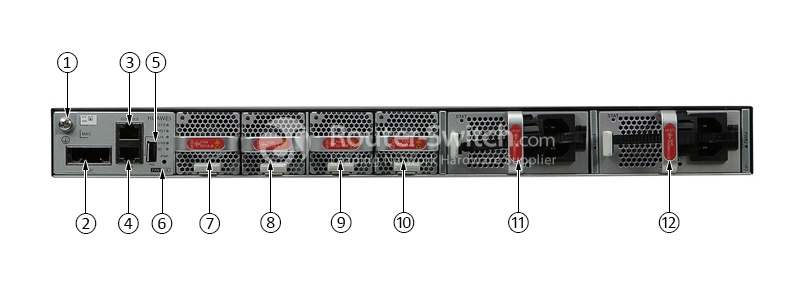
Note:
|
① |
Ground screw |
⑦ |
Fan module slot 1 |
|
② |
SSD card slot |
⑧ |
Fan module slot 2 |
|
③ |
One console port |
⑨ |
Fan module slot 3 |
|
④ |
One ETH management port |
⑩ |
Fan module slot 4 |
|
⑤ |
One USB port |
⑪ |
Power module slot 1 |
|
⑥ |
One PNP button |
⑫ |
Power module slot 2 |
S6730-H48X6C Specification
S6730-H48X6C Specification |
|
| Fixed ports | 48 x 10 Gig SFP+, 6 x 40/100 Gig QSFP28 |
| Dimensions (W x D x H) | 442 mm x 420 mm x 43.6 mm |
| Chassis height(U) | 1U |
| Input voltage | • AC Power
– Rated AC voltage: 100V to 240V AC; 50/60 Hz – Max. AC voltage: 90V to 290V AC; 45–65 Hz • DC Power – Rated DC voltage: –48V~–60V – Max. DC voltage:-38.4V DC~-72V DC |
| Input current | AC 600W:Max 8A
DC 1000W:Max 30A |
| Maximum power consumption | 274W |
| Minimum power consumption | 97W |
| Operating temperature | • 0–1800 m altitude: -5°C to 45°C
• 1800–5000 m altitude: The operating temperature reduces by 1°C every time the altitude increases by 220 m. |
| Storage temperature | -40-70℃ |
| Operating altitude | 5000 m |
| Noise (sound pressure at normal temperature) | 65dB(A) |
| Surge protection specification
|
AC power interface: differential mode: ±6kV: common mode: ±6kV
DC power interface: differential mode: ±2kV: common mode: ±4kV |
| Power supply type | 600W AC Power
1000W DC Power |
| Relative humidity | 5% to 95% (non-condensing) |
| Fans | 4, Fan modules are pluggable |
| Heat dissipation | Heat dissipation with fan, intelligent fan speed adjustment |
| MAC | Up to 384K MAC address entries
IEEE 802.1d standards compliance MAC address learning and aging Static, dynamic, and blackhole MAC address entries Packet filtering based on source MAC addresses |
| VLAN | 4K VLANs
Guest VLANs and voice VLANs GVRP MUX VLAN VLAN assignment based on MAC addresses, protocols, IP subnets, policies, and ports VLAN mapping |
| ARP | Static ARP
Dynamic ARP |
| IP routing | Static routes, RIP v1/2, RIPng, OSPF, OSPFv3, IS-IS, IS-ISv6, BGP, BGP4+, ECMP, routing policy
Up to 256K FIBv4 entries Up to 80K FIBv6 entries |
| Interoperability | VLAN-Based Spanning Tree (VBST), working with PVST, PVST+, and RPVST
Link-type Negotiation Protocol (LNP), similar to DTP VLAN Central Management Protocol (VCMP), similar to VTP |
| Wireless service | AP access control, AP domain management, and AP configuration template management
Radio management, unified static configuration, and dynamic centralized management WLAN basic services, QoS, security, and user management CAPWAP, tag/terminal location, and spectrum analysis |
| Ethernet loop protection
|
RRPP ring topology and RRPP multi-instance
Smart Link tree topology and Smart Link multi-instance, providing millisecond-level protection switchover SEP ERPS (G.8032) BFD for OSPF, BFD for IS-IS, BFD for VRRP, and BFD for PIM STP (IEEE 802.1d), RSTP (IEEE 802.1w), and MSTP (IEEE 802.1s) BPDU protection, root protection, and loop protection |
| MPLS | MPLS L3VPN
MPLS L2VPN (VPWS/VPLS) MPLS-TE MPLS QoS |
| IPv6 features | Neighbor Discover (ND)
PMTU IPv6 Ping, IPv6 Tracert, IPv6 Telnet ACLs based on source IPv6 addresses, destination IPv6 addresses, Layer 4 ports, or protocol types Multicast Listener Discovery snooping (MLDv1/v2) IPv6 addresses configured for sub-interfaces, VRRP6, DHCPv6, and L3VPN |
| Multicast | IGMP v1/v2/v3 snooping and IGMP fast leave
Multicast forwarding in a VLAN and multicast replication between VLANs Multicast load balancing among member ports of a trunk Controllable multicast Port-based multicast traffic statistics IGMP v1/v2/v3, PIM-SM, PIM-DM, and PIM-SSM MSDP Multicast VPN |
| QoS/ACL | Rate limiting in the inbound and outbound directions of a port
Packet redirection Port-based traffic policing and two-rate three-color CAR Eight queues on each port DRR, SP, and DRR+SP queue scheduling algorithms WRED Re-marking of the 802.1p and DSCP fields of packets Packet filtering at Layer 2 to Layer 4, filtering out invalid frames based on the source MAC address, destination MAC address, source IP address, destination IP address, TCP/UDP source/destination port number, protocol type, and VLAN ID Queue-based rate limiting and shaping on ports |
| Security | Hierarchical user management and password protection
DoS attack defense, ARP attack defense, and ICMP attack defense Binding of the IP address, MAC address, port number, and VLAN ID Port isolation, port security, and sticky MAC MAC Forced Forwarding (MFF) Blackhole MAC address entries Limit on the number of learned MAC addresses IEEE 802.1X authentication and limit on the number of users on a port AAA authentication, RADIUS authentication, and HWTACACS authentication NAC SSH V2.0 HTTPS CPU protection Blacklist and whitelist Attack source tracing and punishment for IPv6 packets such as ND, DHCPv6, and MLD packets IPSec for management packet encryption ECA Deception |
| Reliability | LACP
E-Trunk Ethernet OAM (IEEE 802.3ah and IEEE 802.1ag) ITU-Y.1731 DLDP LLDP BFD for BGP, BFD for IS-IS, BFD for OSPF, BFD for static routes |
| VXLAN | VXLAN functions, VXLAN L2 and L3 gateways, BGP EVPN
VXLAN configuration using NETCONF/YANG |
| SVF | Acting as the parent node to vertically virtualize downlink switches and APs as one device for
management Two-layer client architecture ASs can be independently configured. Services not supported by templates can be configured on the parent node. Third-party devices allowed between SVF parent and clients |
| iPCA | Marking service packets to obtain the packet loss ratio and number of lost packets in real time
Measurement of the number of lost packets and packet loss ratio on networks and devices |
| Management and maintenance
|
Cloud-based management
Virtual cable test SNMP v1/v2c/v3 RMON Web-based NMS System logs and alarms of different severities GVRP MUX VLAN NetStream Telemetry |
Only logged in customers who have purchased this product may leave a review.
Related products
NETWORKING SWITCHES


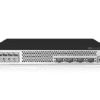



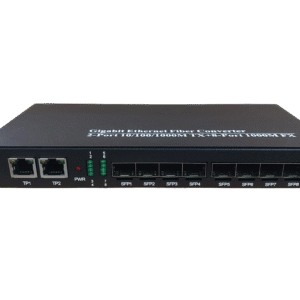
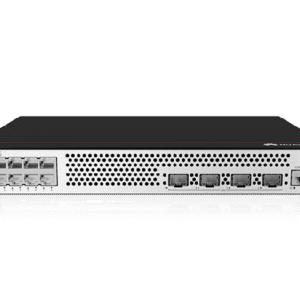


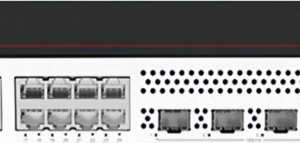
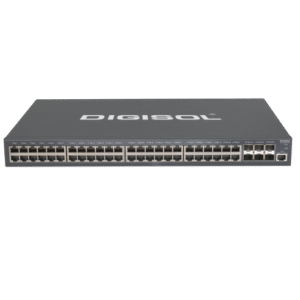
Reviews
There are no reviews yet.